Buying Guide: E46 Compacts
Of all the mainstream BMWs manufactured in the modern era, there’s one that stands out as having the shortest production run, and by some margin. Yes, it’s the E46 3 Series Compact. BMW had had considerable success with the E36 Compact and it was quite a surprise that it took the company so long to get the three-door version of the E46 Three to market… and by the time it did there was another hatchback in the pipeline – the all-new 1 Series that was launched with a fanfare in 2004, and that car effectively curtailed the Compact’s time on sale.
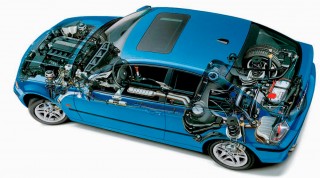
Of course the E46 Compact wasn’t the first BMW three-door hatchback – that accolade goes to the 2000 Touring back in 1971 – but it took BMW a long time to revisit the theme when it built the E36 Compact that made its debut in 1994. It did very well for BMW and while it wasn’t the most popular of the E36 range it did account for one in every six sales, and perhaps most crucially BMW reckoned that two out of every three buyers were new to the BMW brand and that they went on to buy another BMW after they’d sampled the Compact.
Truth be told, the E36 Compact was a bit of a lash up with some E36 parts, some from the E30, and it was quite evident that it was built to a cost and didn’t quite have the quality feel of the rest of the range. As we’ve mentioned it didn’t put buyers off though but BMW had learned its lesson and by the time the E46 version of the Compact hit the streets it was a far more grown up machine. Gone was the slightly cheapened E36 interior and in its place was the ‘proper’ E46 setup as you’d find in the rest of the range. The E30’s rear suspension was well past its sell-by date by this time and thus the Compact featured the multi-link rear end as found on other E46s. It had grown somewhat over the E36 version – 52mm longer, 53mm wider and 15mm higher – and while it sat on the same wheelbase as the E46 Saloon it was in fact 21cm shorter than the four-door on which it was based.

We’re going to concentrate on the petrol models here as it’s not that long ago that the 320td version was the subject of one of our ‘10 Minute Guides’ and while the 2.0-litre diesel is the economy champion of the range the four-cylinder petrols are cheap to buy, the 325ti is a real performer and a bit of a well-kept secret to those looking for performance on a budget.
When it was launched in the UK in August 2001 there were initially two models to choose from; the 316ti and the 325ti, and they were pretty rapidly joined by the 318ti. The big news for the four-cylinder machines was that they were the first BMWs to be endowed with Valvetronic and this allowed power and torque gains over the older four-pot units while also seeing improvements in economy and emissions. To be honest the 316ti wasn’t really anything to write home about as its 1796cc unit developed just 115hp and 129lb ft of torque which equated to a somewhat leisurely 0-62mph time of 10.9 seconds for the manual and an even more sedate 11.9 seconds for the auto-equipped model.
With an extra 200cc to play with the 318ti was a more appealing proposition with 143hp and 148lb ft of torque – not monumental gains but enough to see the 0-62mph time improve by over one and a half seconds while only losing out by a couple of miles per gallon in the economy stakes. The real star in performance terms was the 325ti with the creamy smooth 2.5-litre version of the M54 ‘six giving 192hp and 181lb ft of torque – good enough for a 0-62mph time of 7.1 seconds – yet it was still capable of returning 31.7mpg on the combined cycle.
The four-cylinder cars were available as either base models or as SEs (Special Equipment) while initially the 325ti was only available as an SE. Base models were a little on the poverty-spec side of things and didn’t even feature air-con and for this reason many owners opted for the SE pack for an additional £1500 which added auto air-con, cruise control, 16-inch alloys, electric pop-out rear windows, a front armrest, front fogs, heated mirrors and washer jets, on-board computer, PDC and a Sports multi-function steering wheel. To this lot the 325ti SE added a different style of 16-inch alloys, anthracite roof lining, DSC stability control, colour-coded exterior body parts, cloth/leather sports seats and Titan line exterior trim.
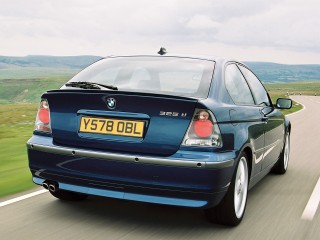
In April 2002 a Sport trim level was added to the 325ti line-up and this offered 17-inch alloys, black aluminium cube interior trim Laser cloth/Alcantara upholstery M aerodynamic body styling and M leather multi-function steering wheel and Sports suspension. And all for just £910 more than the SE-spec machine.
In 2003 there was some minor tweaking to the spec of the Compact which coincided with face-lifts for the 3 Series Coupé and Convertible models. For the Compact it was really just minor detailing – there were new sill trims, a wider boot grab handle and perhaps the most significant upgrade: a reworking of the rear light clusters to make them look far more attractive than the older Lexus-style units. DSC was now standard on all Compacts, while the 325ti gained the six-speed manual gearbox. The SMG system from the 330Ci and 325Ci was also added as an option to the 325ti.
During 2003 the Sport trim level was added to both the 316ti and the 318ti while the 316ti could also be spec’d in an ES trim which was effectively a halfway house between the base model and the SE. 2004 saw the arrival of the 1 Series hatch which effectively ended the reign of the three-door 3 Series.
Wheels, tyres and brakes
E46 brakes are all discs front and rear and ABS with either ASC or DSC. DSC cars have a pair of sensors on the side of the master cylinder and can fail, but they only take about an hour to replace plus rebleeding of the brakes. Sensors are plentiful used – £30 should bag you one. Discs and pads are only about £35 a pair, and £20 for a set of front pads.
Rusty brake pipes are an E46 bogey and most will need the rear ones replacing. ABS sensors fail and are tough to replace but scan for fault codes – thankfully E46 ABS control units rarely go wrong. Standard Compact four-cylinder wheels were 15-inch alloys but most have 16s. 17- and 18-inch alloys were used on the Sport models and 325ti cars and tyres are £80 for a pair of 205/55×16 Goodyear Efficient Grip, or £200 for a pair of Uniroyal RainSport 255/35x18s.
Engine
For the first three years, the 316ti and 318ti were powered by the N42 four-cylinder engine that debuted in late 2001 for the face-lifted E46 range. With Valvetronic and Vanos variable valve timing the N42 is every engineer’s wet dream but a mechanic’s nightmare. The N42 has not forged itself a great reputation in old age. Firstly, it loves to leak oil – cam cover gaskets, vanos solenoid O rings, brake vacuum pump O ring plus many more. The timing chain is also fraught with problems relating to both chain stretch as well as the nylon guides breaking up with old age. Both will lead to chain jump and to replace the chain and rails (it’s a cassette setup) is, to be fair, three hours of work as long as the guide rails are intact – if not, the sump needs to be dropped to fish out the bits – add another two or three hours for that.
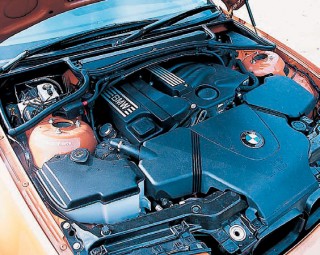
Both inlet and exhaust Vanos units can fail with the exhaust being more prone, whilst the chain stretch can result in the chain wearing into the Vanos solenoid. If that’s not enough, the Valvetronic system can cause trouble. Wear on the eccentric shaft that operates it all results in a very slight misfire at idle, enough to cause an MoT fail, whilst the 12-volt motor that rotates the shaft can fail – as can the separate ECU that controls the Valvetronic system. Bore/ring wear is common leading to bluey/grey exhaust smoke but at least crankshaft troubles are rare.
The N46 that replaced it is similar, the only real difference being that the Valvetronic control was now performed by the engine ECU. The timing chain tensioner plug was also stronger but despite improvements, the N46 still isn’t a great engine. Repair costs are around £500 for a timing chain and rail replacement if the sump can stay on, £250 to supply and fit a new Valvetronic motor and nearly a grand to supply and fit a new eccentric shaft – in other words, engine repairs are bordering on being uneconomical. The crankshaft position sensor was intelligently mounted on the back of the block under the inlet manifold… just where you can’t get to it. Coil packs rarely fail and the engine management system is more reliable than the 2007-onwards N43 direct injection motor. Replacement takes two to three hours involving removing the manifold itself.
Head gasket failure is the final N42/N46 nasty but isn’t common – oil in the coolant can be due to the engine-to-coolant heat exchanger leaking, a 30 minute fix costing £50 in parts whilst the auto box cooler can do the same. When running well they’re okay but the potential for going wrong is high – find one with a bill for engine work and regular oil changes and it should be okay. Don’t be put off – these are cheap cars now and there are still thousands of them on the roads and if you’re after a winter beater then one that runs okay could be fine for 500 quid. Just be aware that the cost of fixing one is often prohibitive.
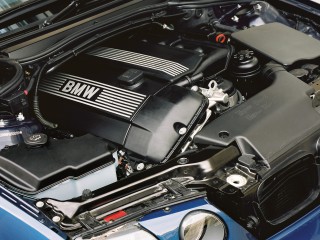
The 325ti is more like it. Powered by a 192hp M54 2.5-litre unit, the 325ti goes very well indeed and isn’t too tragic on fuel. The M54 can suffer head gasket failure but given that a good used 2.5 engine is worth £250, it’s not worth getting involved in lengthy repairs – due to the alloy block threads weakening, any attempt at a gasket swap inevitably ends in tears. Cam cover gaskets can leak, and by now they will all need the CCV (crankcase ventilation) valve and rubber breather hoses replacing but apart from that, the M54 is a great engine. Some use oil (but not as much as the 3.0-litre version) but timing chains rarely fail (if ever) but the Vanos unit will appreciate being resealed by now – £300 with new seals.
Be aware that a 330i engine is near enough a straight swap as well, and that an older E46 2.8 bare engine will also fit once fitted with the 325ti loom, manifolds and ancillaries. E46 cooling systems are well known for being a bit fragile – the header tanks can rupture, alloy radiators ‘bow’ down at the base and 325ti water pumps can occasionally shed their nylon impellers – four-cylinder pumps almost never fail.
| MODEL: | 316ti | 318ti | 325ti | |
| ENGINE: | Four-cylinder, 16-valve | Four-cylinder, 16-valve | Straight-six, 24-valve | |
| CAPACITY: | 1796cc | 1995cc | 2494cc | |
| MAX POWER: | 115hp @ 5500rpm | 143hp @ 6000rpm | 193hp @ 6000rpm | |
| MAX TORQUE: | 129lb ft @ 3500rpm | 148lb ft @ 3900rpm | 181lb ft @ 3500rpm | |
| 0-62MPH: | 10.9 seconds (11.9) | 9.3 seconds (10.2) | 7.1 seconds (8.2) | |
| TOP SPEED: | 125mph (122) | 133mph (131) | 146mph (144) | |
| ECONOMY: | 40.9mpg (37.2) | 39.2mpg (35.8) | 31.7mpg (29.7) | |
| EMISSIONS: | 167g/km (183) | 175g/km (191) | 215g/km (217) | |
| PRICE (NEW): | £17,775 (SE, 2001) | £19,345 (SE, 2001) | £22,640 (SE, 2001) | |
| Figures in brackets refer to five-speed automatic gearbox | ||||
Steering and suspension
The E46 was basically a refinement of the E36, so no real dramas here. At the front, outer ball joints can wear out requiring a complete new wishbone, which is around £60 for a decent pattern part. Steering racks rarely give any trouble and a good used one is around £35 and two hours to fit. Some 325ti cars use the LuK-made LF20 power steering pump that has a domed steel rear cover.
These are known to shear internally leading to a loss of power steering – a good used one is £50, while a new one is four times that but the rather better LF30 (flat rear cover) pump and pipework is a direct swap.
Dampers wear out of course and so can the wishbone rear bushes, but nothing is expensive to sort out. At the back end, the rear trailing arm outer bushes will eventually wear out but plenty of cars are still on the originals – the clonking and weird rear steer feeling will tell you when this needs sorting – £25 in parts and a couple of hours each side – feasible DIY as well. Compact boot floors don’t seem to suffer the cracked rear subframe mounting problems that much either. Broken rear coil springs are so common that one wag suggested they were a factory option – but they’re cheap and easy enough to replace.
Body
Even though the Compact was built in the same factory as the Saloons, they seem less prone to rust. Front arches will bubble up eventually but you’ll still find a lot of early 51-plate cars with good arches – the rears seem less rust-prone too. As mentioned earlier, the boot floor problems rarely afflict these. Rear wiper motors are a common casualty – water that passes through the spindle to supply the rear washer jet leaks into the motor, rusting it solid – a new one is around £160 but you’ll get a good used one for £40.
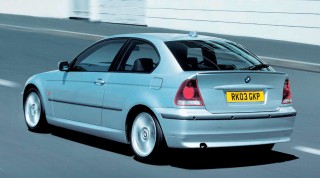
Central locking problems will be due to the general body module behind the glovebox – £25 for a good used one and an hour to fit and code to the car. Dead batteries in the key require extreme skill to replace, often ending in disaster – instead, buy a used key with a good battery, cut the blade off and have it on the key fob once it’s been ‘paired’ to the original – most BMW specialists can do this for a small fee as it only takes minutes. Like all E46 cars, it’s worth whipping the driver’s door lock out (30 seconds with an allen key) and giving it a dose of spray grease to prevent it seizing – important if the key battery is dead and you’re locking and unlocking it manually.
A very rare option on the Compact were bi-xenon headlights – option code 522 and so rare we don’t think we’ve ever seen them. Other useful options were rain sensing wipers, PDC, electric folding mirrors and electric opening rear side windows. Compact buyers, though, seemed adverse to spending money of such options…
Sport models featured chunkier bumpers, and this LCI model also has the more attractive rear light clusters.
Transmission
The five-speed gearboxes used in manual Compacts just don’t go wrong and even if yours did, a good used one is 50 quid tops and will two hours to replace. Dual mass flywheels are similarly robust but be aware that 325ti clutches will require special tools to setup and adjust – some fours too. The automatic gearboxes are good too. Four-cylinder machines use a GM (General Motors) unit, and 325ti cars use a ZF. Both are reliable, but beware a car with traces of oil in the coolant – this can be the automatic gearbox cooler at the base of the radiator leaking but a cheap fix if caught in time.
As for oil and filter changes – it’s not a bad idea but it’s not essential as long as leaks are corrected. Four-cylinder diffs can whine with old age and a good used one is £100 – they are the same as fitted to 316i, 318i and 320i E46 models but autos and manuals have different diff ratios. 325ti diffs almost never go wrong although they can suffer backlash – you can hear a faint thud as you engage first gear and this can also be tired driveshaft CV joints.
Interior
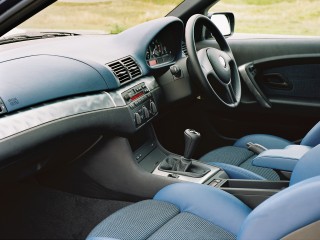
There’s not a great deal to say here that hasn’t been covered before, but a few pointers. Unlike the E36 Compact, the E46 version has the same high quality facia of the Saloon, and the door trims are much better as well. Leather trim as well as half leather are both fairly rare options but look on eBay and you’ll easily score a good leather interior for not much: we found a couple for well under £200.
316ti and 318ti cars were available with the ES (Edition Sport) trim package that came with a very nice chunky M Sport steering wheel as well as single-slot CD player and manual air conditioning – don’t dismiss this as it works well and offers rapid temperature change without having to hold a button down for an eternity.
A super rare option is the Business Navigation system (option 606) – unlike the Professional system, Business Nav was a tiny screen next to the hole for your cassettes that combined direction arrows with voice commands – has anybody ever seen one? Equally rare is the MD (mini disc) player – option code 651.
Electronics
The E46 uses Canbus-type electronics, but there’s not much to worry about. We’ve already mentioned the body control unit and the rear wiper motor and there isn’t a lot more to go wrong. Some cars will have factory sat nav but it’s ultra rare and not worth having. Most cars will have the standard business cassette player but as E46 radios aren’t coded, you can buy a used CD player for around 50 quid and fit it straight in in less than ten minutes.
Many Compacts will have the useful BC on-board computer but the end button on the stalk can fail – good used ones are a few pounds to buy and half an hour to fit but as the steering wheel has to come off, the airbag light will normally require resetting. The airbag light is a known issue caused by the occupancy sensor mat in the seat failing. This is a pricey repair at over £200 to supply and fit a new one, but you can buy a cheap resistor for around a tenner that fools the airbag module into thinking the seat is occupied – it means that in a collision, the airbag will still go off but if the resistor is fitted to the passenger seat, that airbag will also activate even if the seat is not occupied.
Broken cables in the window regulators are a common E46 fault and the Compact regulators are different to the Saloons’ and Coupés’ – aftermarket ones are £60 a side. Alternators and starters are reliable and used ones are around £30 each. You may prefer a new one but they last so long that the chances of a used replacement failing again are remote.
The E46 Compact used the underpinnings from the Saloon making it an excellent steer.
Buying one
Despite selling relatively well, the petrol-engined Compact is becoming rarer – a quick gander at Autotrader threw up 57 316tis, 17 318tis and just nine 325tis up for sale. The good news is that if you’re looking for a cheap runaround then prices for usable 316tis start at around the £500 mark and you’ll struggle to spend over £2000 on a 316ti, and that should bag you a very clean example with significantly less than 100k miles on the clock and plenty of life left in it. 318tis command a small amount more than their lower-powered brethren and even 325tis don’t cost the earth with several decent-looking examples up for sale for less than £2000.
The Sport trim level is pretty rare – even on 325tis – so be prepared for a bit of a wait if you’re after a specific colour combination with the Sport styling package. If you’re planning to do much motorway work in a 325ti then it’s worth hunting around for a face-lift machine as the six-speed ‘box does make cruising a little quieter and more economical.
As always the best advice is to buy a car more on condition than mileage and look for signs of recent expenditure and with known branded matching tyres all-round – if the owner hasn’t skimped on rubber chances are most other things will have been taken care of properly, too.
Servicing costs
The E46 is a known quantity and really, any competent garage can service and repair them – they’re hardly rare. BMW dealers (particularly in the North of England) can offer some good deals and it’s worth enquiring because many dealers will price match a specialist.
| SERVICE | BMW DEALER | INDEPENDENT |
| OIL SERVICE | £139 | £99 |
| INSPECTION I | £229 | £180 |
| INSPECTION II | £339 | £300 |
| BRAKE FLUID | £70 | £65 |
| FRONT BRAKE PADS | £129 | £99 |
| FRONT PADS AND DISCS | £265 | £220 |
| VEHICLE CHECK | £79 | £75 |
Verdict
When new, the E46 Compact was unfairly overlooked – it may not have won any beauty contests but in funky Pistachio green or the amazing Ambra orange metallic it looked sharp. But it drove well, was solidly built and practical. Now that they’re up to 15 years old with values down to the hundreds (and rarely more than £2000) it’s time to re-evaluate them. The four-cylinder petrols need caution – to be frank, they’re possibly too much of a risk and given that a good 320td can be bought for £1500 you have to really want a petrol because the 320td is usefully fast, much more economical and more mechanically robust. The star though is the 325ti. It’s heavier on fuel (10mpg) but they’re so much better to drive with real vim – get one now before they’re all wrecks.





